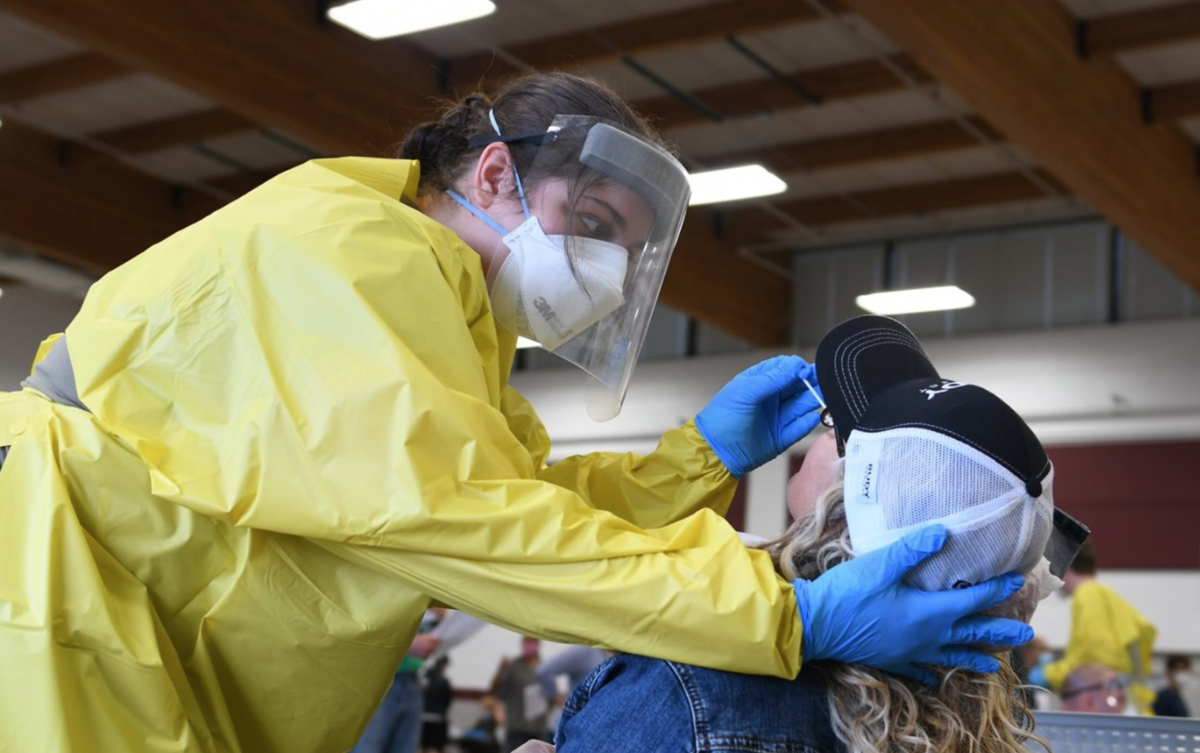
More people who died with COVID-19 are older and have underlying health conditions, however, younger non-white patients with COVID-19 died at a disproportionately higher rate than younger white patients, the Federal Centers for Disease Control and Prevention (CDC).
On July 10, the CDC released a Morbidity and Mortality Report on the Characteristics of More than 10,000 People Who Died with COVID-19 in the US From February 12 to May 18 Using Case-Based Surveillance and Supplemental Data from 16 jurisdictions, including Minnesota.
This information, and an understanding of the factors contributing to the differences in COVID-19 mortality between races and ethnicities, can be used to inform medical and public health officials to prevent COVID-19 deaths by encouraging groups at risk for better preventive measures, such as wearing masks and seeking prompt medical attention if they become ill.
This is what the CDC found:
COVID-19 patients by age and race

Percentage of people who died with COVID-19 by race / ethnicity and age group.
Centers for Disease Control and Prevention
- 74.8 percent of the people who died from COVID 19 were 65 or older. This is consistent with what other reports characterizing COVID-19 deaths have found in the United States and China.
- The median age between Hispanic and non-white COVID-19 patients who died is 71 and 72, respectively. That’s 9-10 years younger than the median age of white COVID-19 patients who died (81 years).
- 34.9 percent of Hispanic (908) COVID-19 patients who died were younger than 65 years old and 29.5 percent of non-white COVID-19 patients who died were younger than 65 years old. Meanwhile, 13.2 percent of white COVID-19 patients who died were under the age of 65.
- The percentage of Hispanic and non-white patients under age 65 who died with COVID-19 exceeds the percentage of Hispanic and non-white people under age 65 in the U.S. (20 percent and 23 percent, respectively).
The CDC says more study is needed to understand why these differences exist between racial groups, and calls the “relatively high percentages” of Hispanic and non-white patients younger than 65 years who died with COVID-19 “remarkable.”
It could be that the pandemic disproportionately affected younger and non-white people during the study period, or it could be that the transmission rate is higher among younger non-white people than among white people, according to the report. One factor contributing to a higher transmission rate could be that the higher percentages of Hispanic and non-white people working in jobs that do not always allow physical distance, such as the service industry.
Underlying medical conditions
- 76.4 percent of the patients (8,134 people) who died with COVID-19 had one or more reported underlying medical conditions. This is consistent with what other reports characterizing COVID-19 deaths have found in the United States and China.
- Cardiovascular disease and diabetes were the most common underlying medical conditions reported: 60.9 percent of patients (6,481) who died with COVID-19 had cardiovascular disease, 39.5 percent of patients (4,210) who died with COVID-19 had diabetes.
- 83.1 percent (2,228 patients) who were younger than 65 and died with COVID-19 had at least one underlying health condition on the list.
- Of those who died with COVID-19 and were under the age of 65, 49.6 percent (1,330) had diabetes. That is “substantially higher” than an analysis of COVID-19 hospitalized patients aged 65 years or younger (35 percent had diabetes) and the general population with diabetes (less than 20 percent).
The CDC says that public health communication campaigns could encourage COVID-19 patients who have underlying medical conditions to seek medical attention before their illness.
Meanwhile, the CDC says healthcare providers should consider the possibility of disease progression in people with underlying health conditions and those under 65 who are Hispanic and non-white.
Where they died
- 62 percent of the patients (6,604 people) who died with COVID-19 died in the hospital; 5.2 percent (549 people) died in the emergency department; 5.3 percent (567 people) died in a long-term care facility; and less than 1 percent died at home (79 people) or in hospice (28 people). Meanwhile, for 26.5 percent of cases (2,820 people), the location of death appears unknown.
- Of the patients younger than 65 years who died with COVID-19, 7.8 percent died in an emergency room (6.8 percent / 181 people) or at home (1 percent / 27 people). Deaths outside the hospital may reflect a lack of access to medical care, delays in seeking care, or delays in diagnosis, the CDC notes.
Using the data
CDC says public health officials at the regional and state levels should examine the roles of age, race, severity of illness, underlying medical conditions, socioeconomic status, behavioral factors, and deaths outside the hospital. that transmit the virus and the deaths associated with it. Doing so could lead to prevention initiatives at the community level to prevent more COVID-19 related deaths.
Such initiatives could be campaigns aimed at informing Hispanic and non-white people under 65 about the importance of social distancing and the need to wear masks in public.
.
